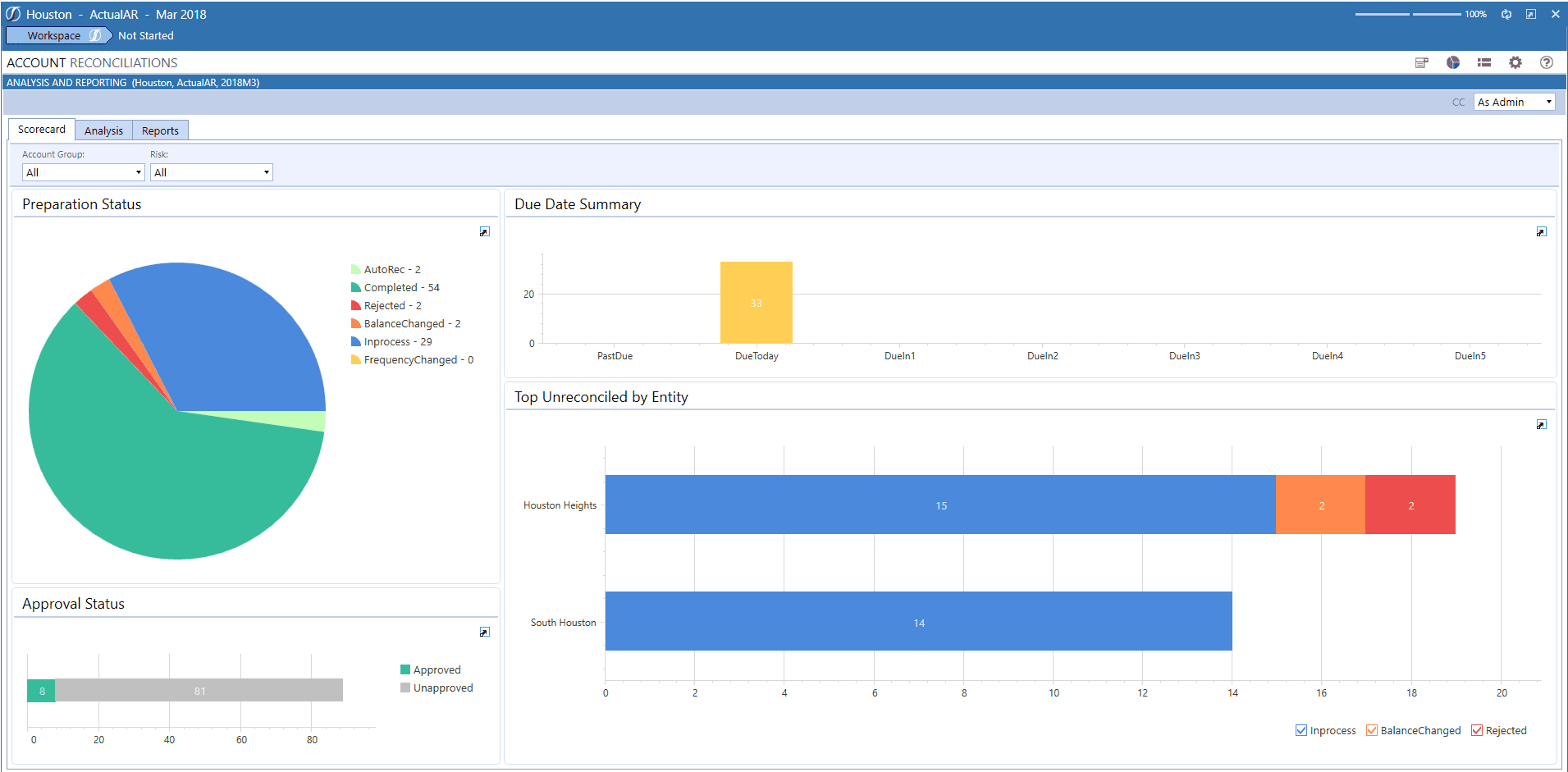Account reconciliations is the process of ensuring financial statement account balances are correct at the end of an accounting period. It’s a process that uses two sets of records to ensure figures are correct and in agreement. And if they are not in agreement, making necessary adjustments or identifying and explaining differences.
When Are Account Reconciliations Performed?
Account reconciliations are typically performed after the close of a financial period. Accountants review each account in the financial statements and verify that the balance listed is accurate. This often involves comparing the financial statement balance to another source of information – for example comparing the balance for the Cash account to an external bank statement. Other examples of critical accounts that require reconciliation include:
- Cash and investments – comparing to external bank and investment accounts
- Accounts Receivable – comparing to the AR sub-ledger
- Accounts Payable – comparing to the AP sub-ledger
- Prepaid Expenses – listing the components of the account balance
- Accrued Liabilities – listing the components of the account balance
- Intercompany Payables and Receivables – ensuring they eliminate during consolidation
- Fixed Assets – listing the components or tying out to a sub-ledger
The main reason for performing account reconciliations is to ensure consistency and accuracy in financial reporting. Account reconciliations are especially important and are a key internal control for publicly-held companies that need to report financial results to external stakeholders, with detailed audit trails available to back-up all account balances.
Key Challenges
There are several challenges to performing account reconciliations, especially in a large, global enterprise. One of the biggest challenges is the sheer number of accounts to be reconciled. This can range from hundreds to thousands of accounts across the parent and various subsidiaries of a global enterprise. Also related to this is the need to reconcile data between multiple software applications used to run the business. The more systems, the more reconciliation that’s required.
For large and small to mid-sized organizations, timing issues are a key challenge, most often in areas such as bank deposits and payments to vendors. If account reconciliations are being performed during the period-end close process, it can also be challenging to reconcile data that’s changing day-to-day or hour-to-hour during the close. Prioritizing which accounts need to be reconciled, based on materiality, is another challenge in larger enterprises, as is gaining the appropriate reviews and approvals, and ensuring an adequate audit trail for account reconciliations.
CPM Tools You Can Use
There are several types of tools accountants can use to perform account reconciliations. Prior to the wide availability of PCs and electronic spreadsheet software, account reconciliations were often performed manually using pencil and paper. While working for a bank in the early days of my career in accounting, one of my key responsibilities was to perform general ledger account reconciliations, which I did use manual sheets which were kept in notebooks for reference and auditing purposes. The availability of personal computers and spreadsheet software in the early 1980’s changed this, and spreadsheets became one of the most popular tools for performing account reconciliations.
availability of PCs and electronic spreadsheet software, account reconciliations were often performed manually using pencil and paper. While working for a bank in the early days of my career in accounting, one of my key responsibilities was to perform general ledger account reconciliations, which I did use manual sheets which were kept in notebooks for reference and auditing purposes. The availability of personal computers and spreadsheet software in the early 1980’s changed this, and spreadsheets became one of the most popular tools for performing account reconciliations.
Since the early 2000’s, purpose-built software applications for account reconciliations have become available. These software applications provide the ability to load account balances and transactions from GL/ERP systems, automate manual matching and comparison tasks, and support electronic workflow and approvals.
Purpose-built account reconciliations software applications are available on a standalone basis, and also can be implemented as part of an integrated suite of corporate performance management (CPM) applications. These applications typically include financial close and consolidation, reporting, planning, forecasting, analysis and other capabilities.
OneStream Aligns Account Reconciliations with Financial Reporting
OneStream Software’s ability to unify and align account reconciliations with financial reporting is unique in the market. To start, OneStream provides a unified SmartCPMTM platform that simplifies and aligns financial consolidation, reporting, planning, analysis and data quality. With OneStream, customers can replace multiple legacy applications with a modern, scalable platform, that runs on-premise or in the cloud. We simplify life for Finance admins and users and enable them to spend less time managing systems and moving data – and more time on analysis and focusing on the business. That’s why our tagline is “get back to business!”
What’s really powerful about OneStream is that customers can extend their investment with our XF MarketPlace solutions. The XF MarketPlace provides over 50 additional solutions customers can download into the platform without the added complexity and extra costs that have plagued previous generations of CPM products. We are the only CPM vendor that has been able to deliver on the AppStore concept – and our customers absolutely love it!

Account Reconciliations is one of our most popular MarketPlace solutions. Many of our customers have downloaded it, configured it, and deployed it – often replacing Excel spreadsheets and point solutions such as Blackline and Trintech.
OneStream’s customer AFL, who replaced Blackline with OneStream’s Account Recons solution, says OneStream’s approach has sped up their account recons process by 75% and saved them about $100K per year in software licenses.
With standalone Account Reconciliations applications, there’s a huge “black hole” that exists between the account recons and the financial statements. When account recons are happening in a separate system from the financial reporting process – data can easily get out of synch – causing delays in the close process and data integrity issues.
With OneStream it’s a much different picture. Because GL trial balances are loaded into a single system for both financial consolidation/reporting and account recons, the data is always in synch and the close process is faster and more efficient. And users can easily drill from the financial statements, right into the account recons.
OneStream’s Account Reconciliation Solution
Account Reconciliations are a key control in ensuring the accuracy of financial statements published by private and publicly-held companies. Modern CPM solutions like OneStream Software help complex global enterprises automate their account reconciliations processes and streamline the financial close. Learn how OneStream’s account reconciliation features can help accelerate the delivery of financial statements to internal and external stakeholders.
To learn more, watch the replay of our recent webinar on account reconciliations.
Get Started With a Personal Demo



